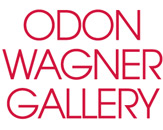Albert Neuhuys
Dutch
Albert Neuhuys, took up the tradition of the finest Dutch Masters, and was taught by Gysbertus Craeyvanger (1810-1895) in Utrecht. He participated in world exhibitions, including the 1889 Exposition Universelle in Paris, where he received a silver medal. His work was also shown in the Munich exhibition, where he was awarded a medal in 1889, in Vienna where he won a medal in 1894 and in London.
Neuhuys’ favourite subjects were history and portraiture. From 1870, following the examples of Josef Israels (1827-1911) and Jacob Maris (1838-1899), he found his true passion for painting in the representation of peaceful Dutch interiors. He was particularly attracted to the charm of young children and the grace of motherhood. Neuhuys was skilled at capturing the various effects of light on his subjects, depicting, for instance, sunlight shining through the narrow window of a fisherman’s house so that fair-haired children appeared haloed. He successfully infused his figures with an intensity of expression, subtly conveying the mood and feeling of his scenes, with fine drawing and delicate colouring.




